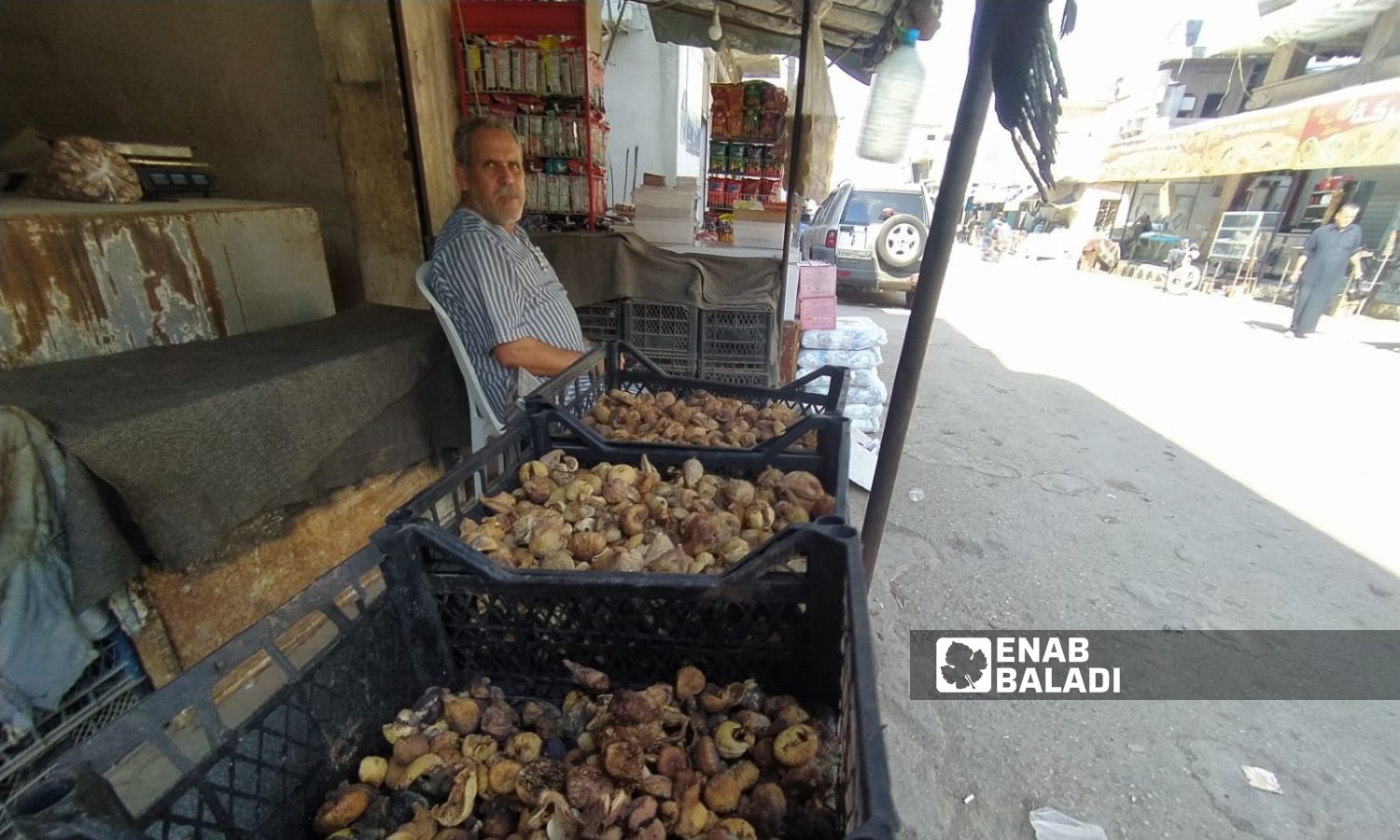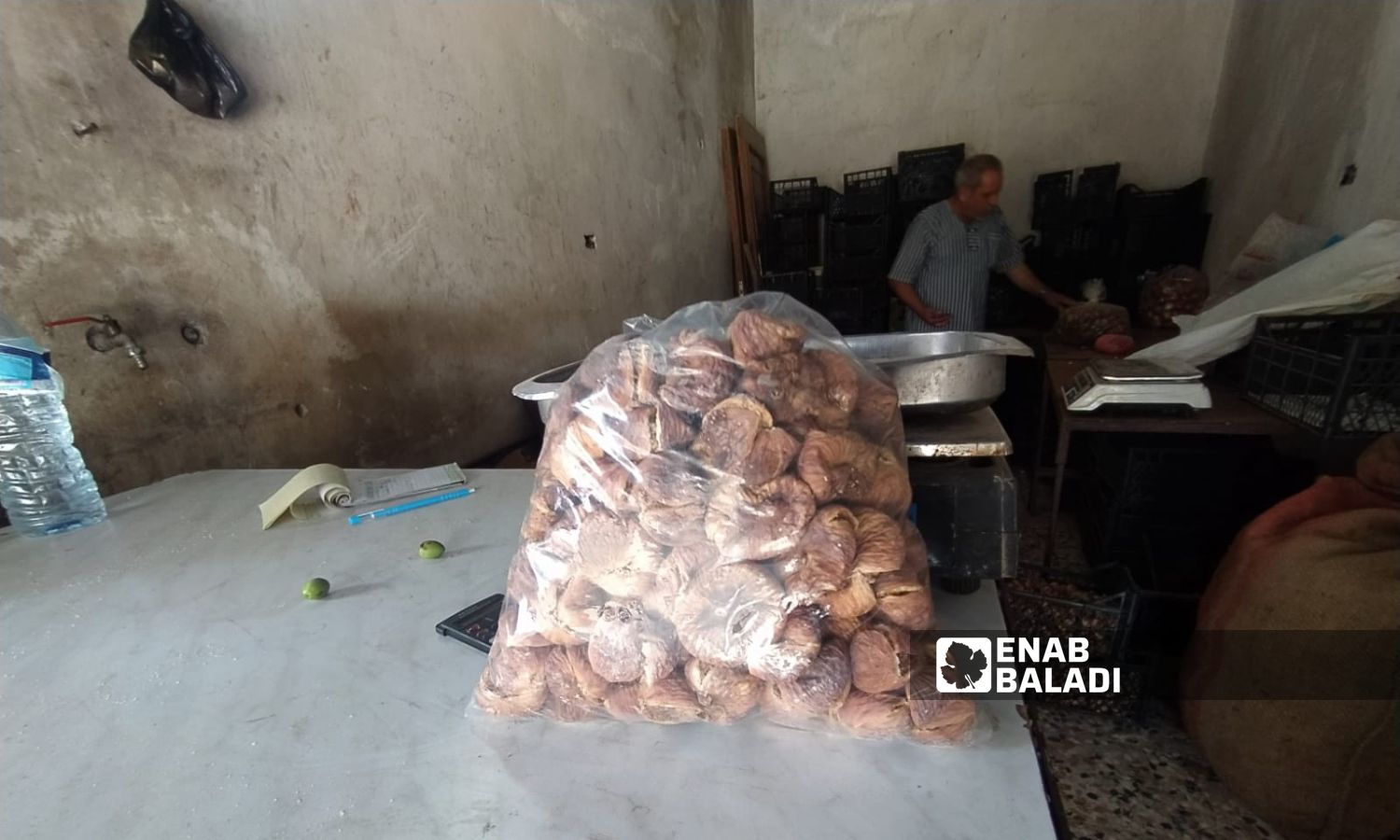



Idlib – Shams al-Din Matoun
Fig farmers in the northwestern region of Idlib suffered a new disappointment after most of them stopped selling fresh figs at low prices when they were harvested, hoping for a better season with dried figs.
Dried figs represent a good opportunity for farmers to earn more profits than when they are fresh and also an opportunity for labor. Work on this traditional fruit begins from mid-August until the end of October every year, but the prices were low and did not cover the costs.
Farmers leave figs on trees until they dry completely and fall on their own, while other times, they harvest them and spread them on roofs in the sun.
Dried figs are distinguished according to the regions from which they come. Mountain figs are the most famous and best quality species and are harvested from the areas of the mountainous Jabal al-Zawiya, south of Idlib.
Idlib figs are grown in the central region of the governorate, and northern figs are those harvested from the northern countryside.
There are three main types of figs: the flower, the petiolate, and the “mutabbaq”, which are suitable for storage and eating. As for the type “known in Arabic as Qaru” it is a fodder fig that is suitable as good food for livestock, farmers told Enab Baladi.
Dried figs are sold in local markets in several stages before being exported to foreign countries such as Egypt and the Gulf region, which is a major market to which merchants seek to supply them.
The farmer reaps his crop and sells it to intermediaries, who in turn strip the fruits according to their quality and type. The figs then go to specialized workshops that clean them of impurities and sterilize them in special warehouses protected from moisture and insects.
After that, the figs enter the bleaching stage, in which tubs of water are used with bleaching agents added to them to remove all impurities and the fig fruit appears in a beautiful appearance.
The figs are then displayed in the open air to dry, and then they are stacked in special molds or hung on ropes so that they are ready to be loaded by the merchants who seek to store them for a longer period until the market is thirsty and they sell it with the aim of exporting it.

Dried figs in the city of Sarmin, east of Idlib – October 17, 2023 (Enab Baladi/Shams al-Din Matoun)
Hikmat Salim, a merchant from the town of Qureen, south of Idlib, told Enab Baladi that the price of a kilo of dried figs ranged between $2 to $4 ($1=28 Turkish liras), noting that the price decreased after the start of the season.
The merchant explained that the dried fig season suffered from a state of stagnation, especially after the entry of figs imported from Turkey, so factories and workshops resorted to mixing it with Syrian figs, which affected its quality and caused its prices to decline.
In turn, Mohamed Abu Hamza, of al-Nayrab town, said that the dried figs were infested with insects that caused damage to part of the crop.
The farmer mentioned that some farmers were forced to harvest their fruits before they dried completely for fear of being stolen or bombed, especially in the southern Idlib countryside, which negatively affected the quality of the variety.
The regime and Russia’s bombing campaign coincided with the end of the dried fig season, which is the stage in which merchants begin offering their stocks of dried figs to sell in the market to exporters.
Muhammad Barghash, a local merchant in the Sarmin market, told Enab Baladi that he decided at the beginning of the season to buy quantities of figs to prepare and sell them in order to make good financial gains.
Barghash added that he worked for a month buying dried figs, inventorying them, cleaning them, and storing them, and at the end of the season, he was forced to sell them to the first merchant who asked for them at a price that did not exceed $2.1 per kilogram. This is due to the bombing campaign that prompted dozens to display their stocks for fear of them being stagnant or being damaged and to lighten their loads as a result of the displacement that occurred in several areas in the Idlib countryside.
Danger continues to haunt agricultural land workers near the engagement lines, despite warnings and instructions and the cessation of military operations in the region after the Moscow Agreement, or what is known as the ceasefire agreement, signed between Turkey and Russia on March 5, 2020.
if you think the article contain wrong information or you have additional details Send Correction